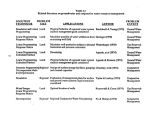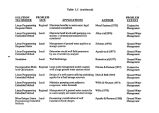| OCR Text |
Show al ( 1981, pp. 353,354) and Klemes ( 1979) using the reservoir storage values determined as a by- product of the modified sequent peak algorithm. 6.3 Operation considering Groundwater Extensions of the approach outlined above to include groundwater as part of a conjunctive use strategy for a surface water- groundwater system are readily forthcoming. For an existing reservoir system, the marginal ( variable) costs of water supply in any year are reflected mainly by the costs of water treatment. Since any economic optimization of the operation of a water supply system considers only the variable costs, the primary consideration in the conjunctive use of a surface water- groundwater system, is the trade- off between the marginal costs of annual groundwater supply and the variable costs annual reservoir supply. An extension of the yield model that considers this trade- off is presented in section 7.3. A variable is introduced to determine an annual firm groundwater yield. It is further presumed that the annual failure in the reservoir supply in the candidate failure years is made up for by increased pumping of groundwater. The optimal degree of reservoir supply failure, in the candidate years is solved for. This solution is influenced directly by the marginal costs of groundwater supply relative to those of surface water supply. As the base level of pumping ( firm groundwater yield) increases, leading to higher base drawdowns in the aquifer, a reduction in the degree of reservoir yield failure, and substitution of surface water by groundwater results. Conversely, if the base groundwater yield is low, with lower base drawdowns, an increase in the failure of reservoir yields in critical years, and in the substitution of surface water by groundwater results. The applications in section 7.3 demonstrate that the yield model developed for conjunctive use of surface and ground waters with the operation rule prescribed following the discussion in this section, successfully analyzes the trade- offs resulting from the economic and hydrologic aspects of surface and groundwater development. Since groundwater usage complements surface water shortfalls, operation rules for the surface water - ground water system follow directly in terms of the reservoir rule curves developed from an analysis of the reservoir storages determined from the modified sequent peak algorithm, upon solution of the conjunctive use model. 6.4 Summary Procedures for the optimal operation of a reservoir system, and a reservoir-groundwater system were considered in this chapter. The utility of the stretched thread method and its limitations were first discussed. Extensions to the method to consider evaporation and periodically variable demand were then developed. The stretched thread method was then compared with the yield formulations for reservoir design and operation discussed by Loucks et al ( 1981) and in chapter 5. A degree of equivalence between the yield formulation representations and the stretched thread method was then demonstrated through modifications of the yield model formulations. Procedures for the inclusion of a mechanism for optimal reservoir operation considering yield reliabilities, in a manner congruous to the stretched thread method, in the multi- reservoir multi- purpose reservoir screening model presented in chapter 5 were then developed. An extension of these procedures to consider conjunctive use of ground and surface water was finally discussed. The procedures developed for reservoir and groundwater operation in this chapter are computationally more demanding than the stretched thread method. They are however in the same spirit, and represent a numerical generalization of the problem to consider multiple purposes for reservoir yield and economic trade- offs in a manner consistent with the results expected for the simpler situations from the stretched thread method. Their 162 |











































































































































































































